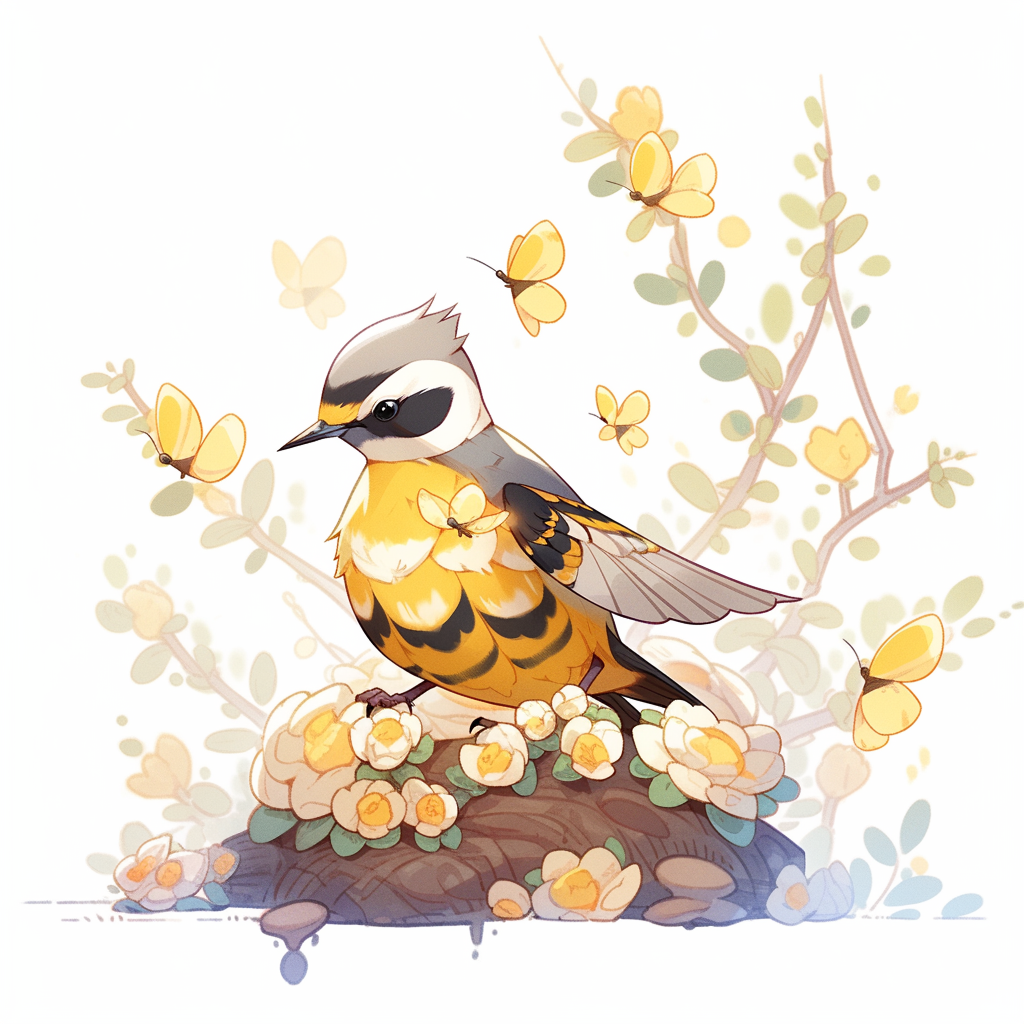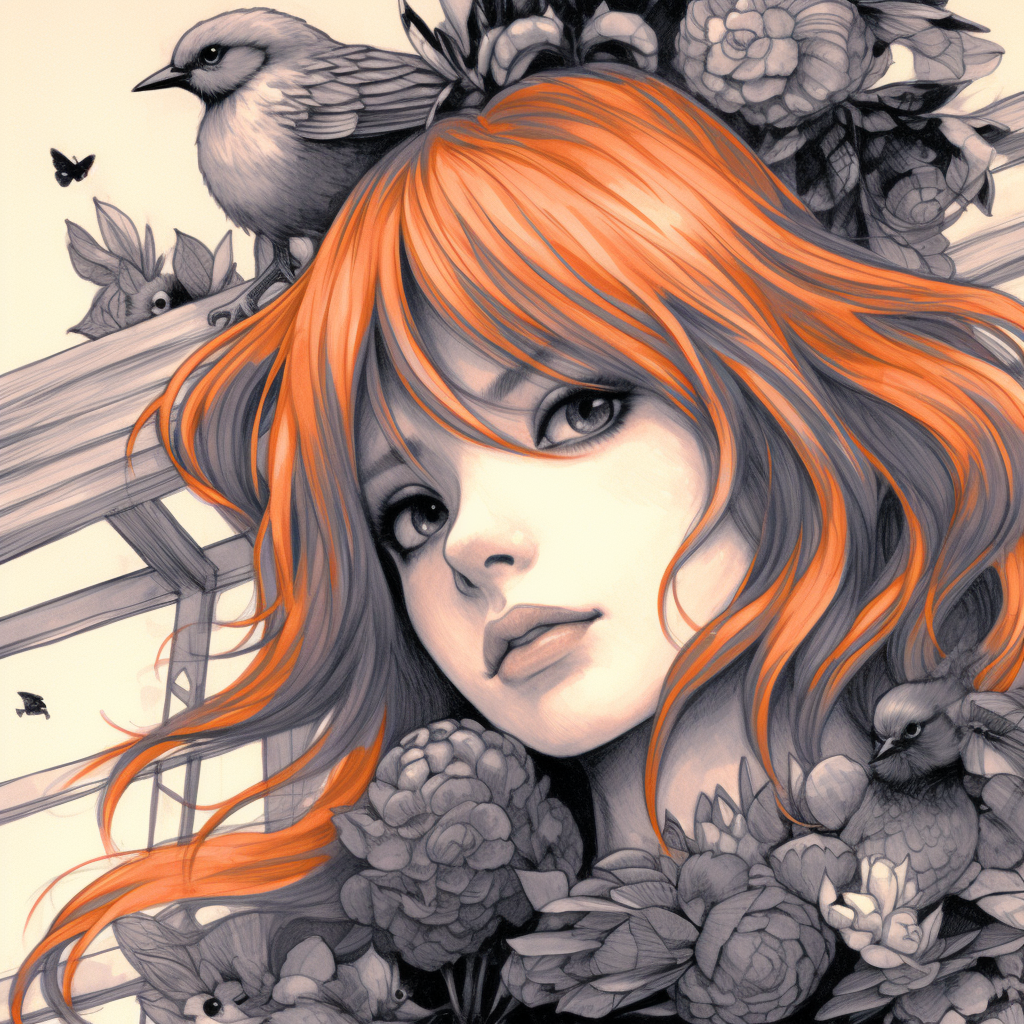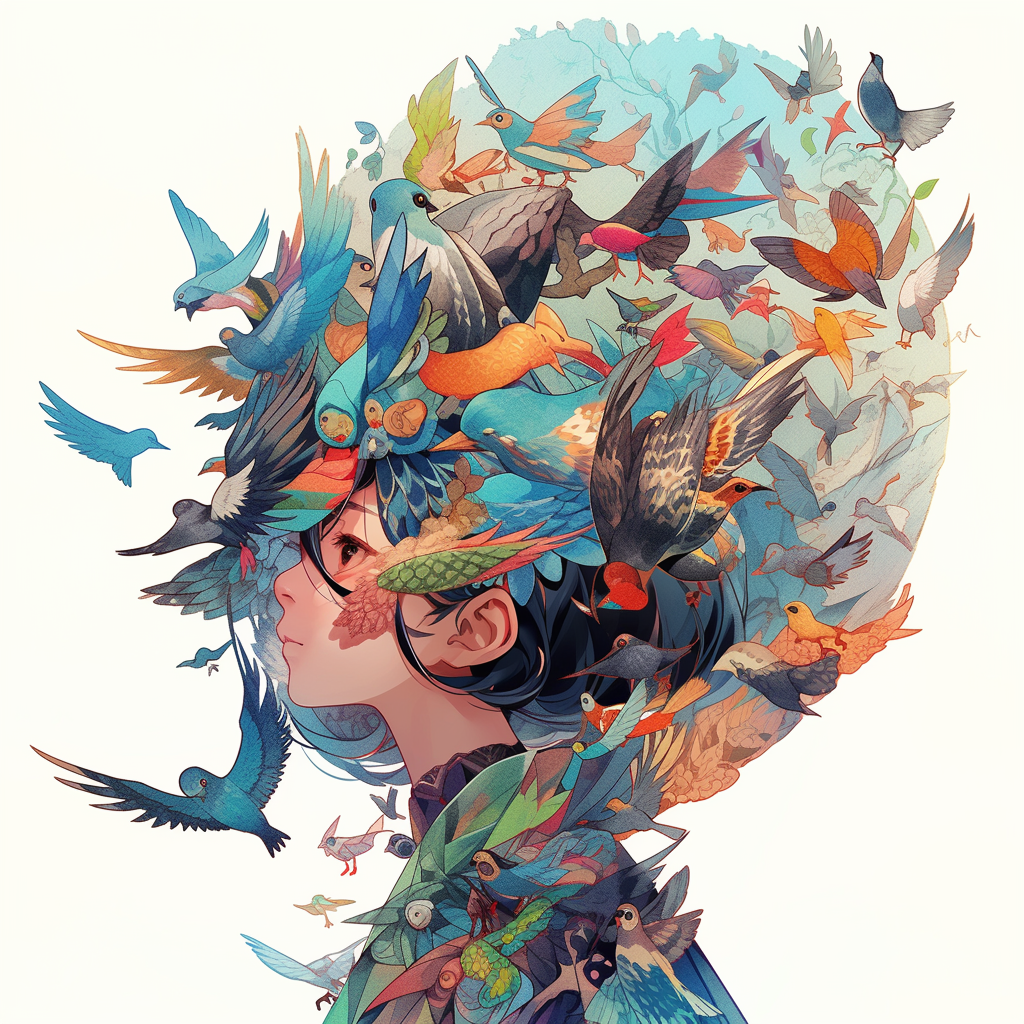The Bees, The Birds and The Bizarre
An AI experiment in humor

Hello! On almost every article I write here, I always add a disclaimer at the very end saying that AI was only used to enhance what I thought of and what I wrote. I’m not a native English speaker, so I have to rely on tools to make sure that the message I write is as clear and readable as possible.
This article however, is the opposite. I made OpenAI’s GPT-4-Turbo write the entire article, then used follow-up prompts to adjust various parts of it. I thought of the initial prompt (although I wouldn’t be surprised if someone else have already explored it), but the rest is from an AI.
Can artificial intelligence tap into the wellspring of human humor to craft articles that tickle our funny bones, or is it bound by its algorithms to a life less laughed? How might AI navigate the nuances of wit and satire to deliver punchlines that resonate with our uniquely human sense of mirth?
Spoilers (Skip this paragraph and return to it after reading the article below): From the overuse of increasingly complicated words and adjectives (I think I need to adjust the frequency penalty), I think we can agree that this article is obviously made by an AI. It’s only about 1000 words, double that counting the adjustments I tried to make, yet the final paragraph is clearly the model hallucinating. It kindof makes sense, but I think even our best and largest LLMs still has ways to go in terms of humor.
Once upon a time in a land not so far away, parents quivered at the thought of having ‘the talk’ with their younglings. In an attempt to soften the blow of biological reality, they turned to Mother Nature’s playbook and spun a tale as old as time itself—the story of the birds and the bees. But let’s be honest here; if we’re aiming for educational accuracy rather than awkward euphemisms, this narrative is about as useful as wings on a worm.
First off, let’s chirp into what might just be one of ornithology’s worst PR moves—birds. Yes, our feathered friends do engage in some form of courtship that could rival any soap opera for drama and intrigue. However, when it comes down to brass tacks (or should we say feathers?), birds lay eggs. Last I checked—and trust me on this one—humans don’t pop out shell-encased offspring after a romantic rendezvous.
And then there are bees—a hive society where speed dating takes on new heights (quite literally). The queen bee has her pick from an array of dashing drones whose sole purpose in life is to woo her majesty… once. That’s right; these buzzing bachelors have exactly one shot at love before meeting their untimely demise post-coital bliss—a concept that would send shivers down any human suitor’s spine.
But wait! There’s more! Let us not forget about flowers—the botanical bedfellows who rely on third-party pollinators like bees or wind to get frisky by proxy. If humans took cues from plants’ reproductive strategies, we’d live in fear that someone sneezing nearby might inadvertently fertilize half the neighborhood—an image straight out of some pollen-fueled dystopian nightmare à la “The Handmaid’s Tale.”
So why do well-meaning adults insist on using such wildly inaccurate analogies? Perhaps it stems from discomfort or maybe even nostalgia for simpler times when storks delivered babies wrapped in blankets directly to your doorstep (another myth ripe for debunking but let’s save that fable flaying for another day).
 Let us dissect further how each element fails spectacularly at preparing young adults for real-world romance:
Let us dissect further how each element fails spectacularly at preparing young adults for real-world romance:
Birds: With their elaborate mating dances and melodious serenades designed to attract mates—not unlike Friday night karaoke—they seem like decent role models until you remember they’re oviparous creatures with cloacas instead of mammalian reproductive systems.
Bees: These insects operate under a strict caste system where most members are celibate workers serving their fertile queen—a matriarchal monarchy that doesn’t quite translate into human societal norms unless you’re pitching ideas for sci-fi novels set in space colonies ruled by empresses hoarding genetic material like intergalactic bank vaults.
Flowers: Ah yes, nothing says “let me explain puberty” quite like describing how plant genitalia require external assistance—from bugs no less—to reproduce successfully. It conjures up images best left unimagined unless you fancy explaining cross-pollination during dinner parties while guests try desperately not to envision themselves as ambulatory anthers and pistils.
In truthfulness though—who can blame those tongue-tied guardians? Discussing sex education frankly requires courage because it means acknowledging children grow up—that innocence morphs into curiosity which blossoms into adulthood replete with responsibilities including understanding consent and contraception among other critical topics far removed from avian egg-laying habits or insect nuptial flights.
 It begs the question whether sticking with tradition does more harm than good when clarity becomes clouded by metaphorical musings better suited for fairy tales than factual information delivery regarding human sexuality which deserves respect rather than reductionist rhymes relegating reproduction discussions behind closed doors whispered between embarrassed giggles or worse yet silence altogether leaving youngsters ill-prepared navigating intimate relationships later life stages demand open honest dialogue sans sugarcoating realities biology dictates regardless whimsy wishes otherwise dictate differently indeed!
It begs the question whether sticking with tradition does more harm than good when clarity becomes clouded by metaphorical musings better suited for fairy tales than factual information delivery regarding human sexuality which deserves respect rather than reductionist rhymes relegating reproduction discussions behind closed doors whispered between embarrassed giggles or worse yet silence altogether leaving youngsters ill-prepared navigating intimate relationships later life stages demand open honest dialogue sans sugarcoating realities biology dictates regardless whimsy wishes otherwise dictate differently indeed!
In conclusion dear readers whilst nature offers boundless beauty inspiration myriad mysteries unravel surely teaching moments pertaining specifically complex nuanced subject matter such sexual health warrant direct approach eschewing obfuscation favor transparency lest misconceptions take root potentially leading confusion consequences avoidable had proper education been imparted outset thus perhaps time retire outdated allegories crafting contemporary curriculum reflecting actualities modern world wherein knowledge power ignorance certainly isn’t bliss especially matters heart loins alike end day both deserve better than bad metaphors misguided myths masquerading meaningful mentorship momentous milestones maturation merit much more meticulous mindfulness moving forward mayhap making way clearer communication future generations flourish fully informed fearless facing whatever comes wing buzz bloom alike!
Note: This was first published as a LinkedIn article.
